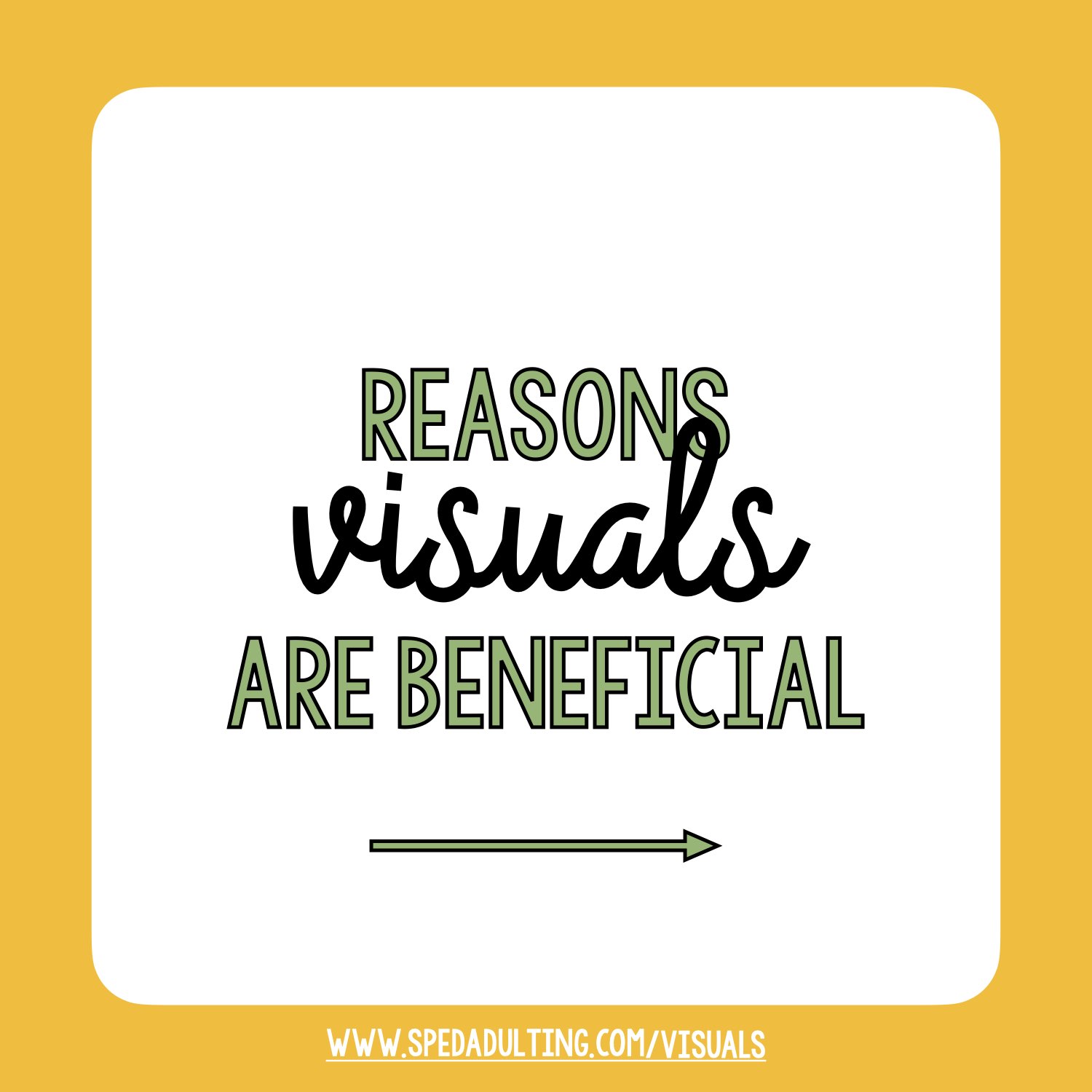Visuals are beneficial for several reasons, whether you are using them for special education or general education students, or even with staff. Visuals are beneficial to everyone. Here are some reasons why:
Better comprehension
Visuals can enhance understanding and comprehension of information by making complex ideas easier to grasp. They can also help people remember information better because they provide a clear, memorable representation of the concept.
Improved communication
Visuals can be used to convey information quickly and efficiently, making them an effective tool for communication. They can also help to convey emotions and feelings that might be difficult to express in words alone.
Increased engagement
Visuals are more engaging than plain text, as they can capture attention and keep people interested for longer periods of time. This is particularly important in the age of social media, where people are bombarded with information from multiple sources.
Accessibility
Visuals can make information more accessible to people with different learning styles and abilities. For example, people who are visual learners may find it easier to understand information when it is presented in a visual format.
Creativity
Visuals can be used creatively to add interest and excitement to presentations, websites, and other forms of communication. They can also be used to showcase a brand’s personality and identity.
Processing Time
Visuals allow the extra time needed for language processing. Visuals are permanent/forever where as words disappear.
Frontload
Visuals frontload students for what is next or for the next transition. This can help reduce/prevent anxiety.
Independence
Visuals help build independence.
- Self-directed learning:Visuals can provide learners with a clear understanding of the concepts being presented, allowing them to take charge of their own learning. With visuals, learners can study at their own pace, review the material as often as they need to, and focus on the parts of the material that are most relevant to them.
- Clarifying instructions: Visuals can make instructions and procedures easier to follow, reducing the need for constant supervision and guidance. This can help learners become more independent and confident in their abilities to complete tasks on their own.
- Encouraging problem-solving: Visuals can help learners identify and solve problems on their own, as they can use the visuals to better understand the situation and come up with solutions. This can build critical thinking skills and encourage learners to be more self-reliant.
- Enhancing organization and planning skills: Visuals can help learners plan and organize their work, making it easier to manage their time and complete tasks independently.
- Increasing motivation: Visuals can make learning more engaging and fun, which can motivate learners to take charge of their own learning and pursue their interests independently.
Visuals are understood by any language
For majority of visuals that represent objects, nouns, verbs…etc, are a common thing for any language and can be understood by people from anywhere.
Visuals have no tone
Unlike spoken words, visuals don’t have an attitude or convey frustration or disappointment. These might be factors that contribute to a learner not being able to process a specific word or sentence, and this is essentially simplified or eliminated by using a visual instead.





